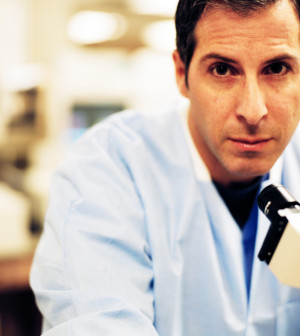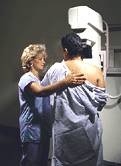- Skip Storing This Everyday Product in the Fridge Door
- Green Tea + B3 Pairing May Boost Brain Health
- Navigating Your Midlife Crisis: Embracing New Possibilities
- City Raccoons Showing Signs of Domestication
- Mapping the Exposome: Science Broadens Focus to Environmental Disease Triggers
- One Week Less on Social Media Linked to Better Mental Health
- Your Brain Changes in Stages as You Age, Study Finds
- Some Suicide Victims Show No Typical Warning Signs, Study Finds
- ByHeart Formula Faces Lawsuits After Babies Sickened With Botulism
- Switch to Vegan Diet Could Cut Your Greenhouse Gas Emissions in Half
Most Breast Cancer Deaths Occur in Younger, Unscreened Women: Study


MONDAY, Sept. 9New breast cancer research reveals a significant death rate among women under 50 who forgo regular mammograms and casts doubt on recent screening guidelines from a U.S. panel of experts.
The findings support the merit of regular mammograms, especially for younger women, said study researcher Dr. Blake Cady, professor emeritus of surgery at Harvard Medical School and Massachusetts General Hospital in Boston.
“I would propose that women start screening at age 40,” Cady said. Younger women tend to have faster-growing, more aggressive tumors, experts say.
When mammograms should start and how often they should be repeated has been a controversial subject. In 2009, the U.S. Preventive Services Task Force, a panel of experts that makes recommendations about health practices, said women aged 50 to 74 should get screening mammograms every two years. Women under 50, the panel said, should talk to their doctors and decide whether to be screened based on potential benefits, such as early detection, and harms, including over-treatment and anxiety caused by false-positive results.
The American Cancer Society and other organizations, however, have continued to recommend annual screening beginning at age 40 for women at average risk. More than 40,000 women die of breast cancer in the United States each year.
For the new study, published online Sept. 9 in the journal Cancer, researchers evaluated more than 600 breast cancer deaths, looking back at mammography records and other details.
Seventy-one percent of the deaths occurred among unscreened women, most of them younger, Cady found. Half of all the breast cancer deaths occurred in women under age 50, while only 13 percent of the women who died of breast cancer were 70 and older.
For the study, Cady and his colleagues tracked invasive breast cancer cases from their diagnoses, between 1990 and 1999, until 2007. Patients were treated at Partners HealthCare hospitals in Boston. The researchers had access to mammography use, surgery and pathology reports, and dates of death.
Cady’s team used a technique called “failure analysis,” in which scientists look back to see what might have gone wrong. “It’s the converse of a randomized trial, which starts at point A and follows people until the end of the study,” Cady said. “We follow people who have died and go backward to their original diagnosis and find out the details.”
Women were described as unscreened if they had never had a mammogram or it had been more than two years since their last mammogram.
The findings confirmed the benefits of earlier screening, some experts said.
“[The study] presents a very compelling argument in favor of screening beginning at age 40 on an annual basis,” said Dr. Barbara Monsees, chairwoman of the American College of Radiology Breast Imaging Commission, who was not involved in the research. “It corroborates what we have known for a long time.”
Overall, the study also showed an increase in breast cancer survival coinciding with the emergence of mammography. Half of women diagnosed with breast cancer in 1969 died within 13 years after diagnosis, compared to about 9 percent of those diagnosed between 1990 and 1999 who were included in this study.
Although some experts have credited the decline in breast cancer death rates to improved treatments, the study shows that’s not the whole story, Monsees said. “This paper shows the decline is primarily due to earlier detection and better screening,” she said.
Frequent screening is even more important in younger women than in older woman, she added. Tumors in older women typically grow slower than in younger women.
The bottom line: “Screening doesn’t reduce the risk of getting breast cancer, but it does reduce the risk of dying from it,” Monsees said.
Robert Smith, director of screening for the American Cancer Society, offered this perspective: “Regular screening was associated with a much, much lower likelihood of dying [from breast cancer],” compared to no screening or long-ago screening.
One-third of deaths among those who did get screened regularly were attributed to “interval cancers,” those detected in between the mammograms done every two years. Although this shows that getting regular mammograms doesn’t entirely eliminate the risk of dying from breast cancer, Smith said, “the message here is that mammography is a good part of your prevention plan.”
If the cancer is detected early, options for breast-conserving surgery are greater and the risk of dying from the cancer is reduced, he said.
More information
To learn more about mammography, visit the American Cancer Society.
Source: HealthDay
Copyright © 2025 HealthDay. All rights reserved.










